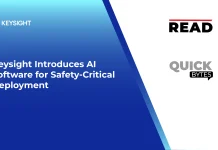World’s First Steel Body-in-White concept for autonomous MaaS vehicle applications delivers key sustainability, performance targets.
Results of a global steel industry initiative aimed at developing the world’s first fully autonomous, electric vehicle body structure concept for ride sharing were unveiled , highlighting key sustainability and performance achievements. The project, called Steel E-Motive, is the culmination of a three-year research program led by WorldAutoSteel and in partnership with global engineering firm Ricardo. Its objective was to create a fully autonomous ride sharing vehicle concept showcasing the strength and durability of steel with a critical focus on sustainability for reaching net zero emissions targets. The results are safe, comfortable, and affordable body structures that support automakers in the continued development of Mobility as a Service (MaaS) ride sharing models.
Key program results include:
Sustainability
- Potential for ~86% total lifecycle CO2 emissions reduction.
- 282 kg body structure, 25% mass reduction over an expected reference vehicle of 374 kg.
Safety and Comfort
- Advanced High-Strength Steel (AHSS) body structure and closures purpose fit for Mobility as a service (MaaS) electric vehicles.
- World’s first autonomous vehicle engineered to meet global high speed crash regulations that can achieve the IIHS “Good” rating.
- Seven Advanced High-Strength Steel structural innovations that provide safe, efficient and economical vehicle architectures.
Economy
- Intelligent battery packaging that is 37% lighter and 27% lower in cost than average reference battery pack structures, and applicable for current BEVs in development.
- Manufacturable using global manufacturing and supply infrastructure at costs that can support profitable margins, both for the vehicle manufacturer and mobility service providers.
“The objective of Steel E-Motive was twofold: one, as an industry, to create a solution that supports a sustainable, safe, and affordable future for urban mobility; and two, to showcase the role modern steel can play in making that future a reality,” said Cees ten Broek, Director, WorldAutoSteel. “This project represents an important step forward for autonomous ride sharing and zero-emission transport, and truly demonstrates how working together as an industry yields important results.”
Steel E-Motive is the latest in a history of steel industry demonstrations over the past 25 years that showcases new AHSS applications for automotive structures. WorldAutoSteel, the automotive group of the World Steel Association, which comprises 18 global steel producers, led the project, working closely with Ricardo, who managed the overall engineering design, testing, and development.
Vehicle Specifications
The program highlights two virtual concepts designed for 2030-35+ deployment: SEM1, a four-passenger urban transport, and SEM2, a six-passenger extra-urban commuter, both designed for level 5 autonomy with no steering or pedal box. Other specifications include:
|
|
|
Neil McGregor, Chief Engineer, Ricardo, said: “We’re extremely proud of our collaboration with WorldAutoSteel to help Steel E-Motive become a reality. Our experts are working with global OEMs and Tier 1 suppliers to develop solutions for the future of clean and sustainable mobility. The impressive performance, safety, and lifecycle results of this program are validation that steel is infinitely tunable, offering engineering and design flexibility that enables efficient and effective solutions. It has the potential to shape not only the future of Mobility as a Service, but how we design and utilize shared passenger transport in urban environments and city landscapes.”
Steel Innovations
Using the newest steel grades and fabrication processes, Steel E-Motive’s portfolio enables tailoring vehicle properties that achieve significant safety, cost, and comfort advantages with seven key innovations only possible using steel:
- B-Pillarless, one-box open body structure provides a wider door aperture for easy ingress/egress, disabilities access, and facilitates delivery services.
- AHSS Extended Passenger Protection Zone provides excellent intrusion protection for rear-facing passengers.
- Short Front Crash Zone structure meets the most stringent global crash requirements. Dual Phase (DP) Tailor Welded Blanks enable efficient design.
- Small Offset Crash Glance Beam minimizes cabin intrusion and lowers crash pulse while preserving door ring and battery in 64 kph small overlap rigid barrier simulations.
- (Rocker) Hex beam energy absorbers, made of roll-formed DP steel, are low cost, compact, and mass efficient, minimizing side crash intrusion and achieving superior battery protection.
- Virtual B-Pillars are integrated into the doors, creating a compact section for better passenger visibility and improving passenger access. Bake Hardenable steel’s Class A-quality surface combined with a scissor door design enables complete elimination of the body side outer for mass and cost savings.
- Industry-First Battery Carrier Frame eliminates the conventional battery case, utilizing the existing floor as the top cover, and features an AHSS triple-skinned bottom cover that seals the battery and provides protection from road debris and jacking errors. These efficiencies result in 37% mass savings (-27% less cost) and can be assembled offline for efficient vehicle integration.
SOURCE: PRNewswire




